Exploring on Foot
Dorogawa Nature Study Trail
The Dorogawa Nature Study Trail is full of natural attractions tracing the richness of nature, including streams, alpine plants, waterfalls, and limestone caves, with water selected as one of the 100 best waters, as well as historical sites and culture closely related to Shugendo. The course has little elevation differences, and there are also points where you can take shortcuts along the course.
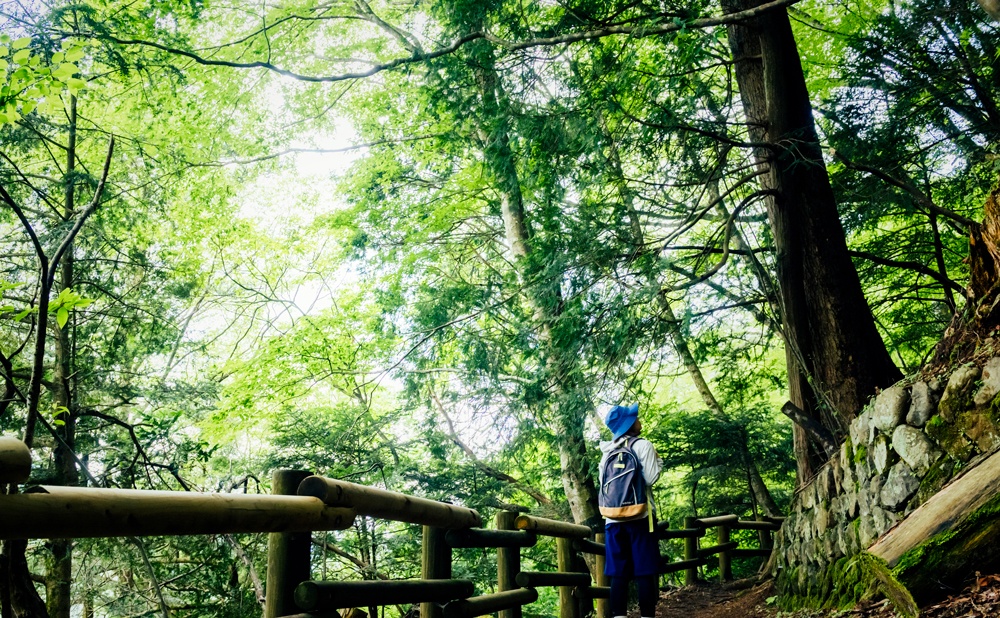
-
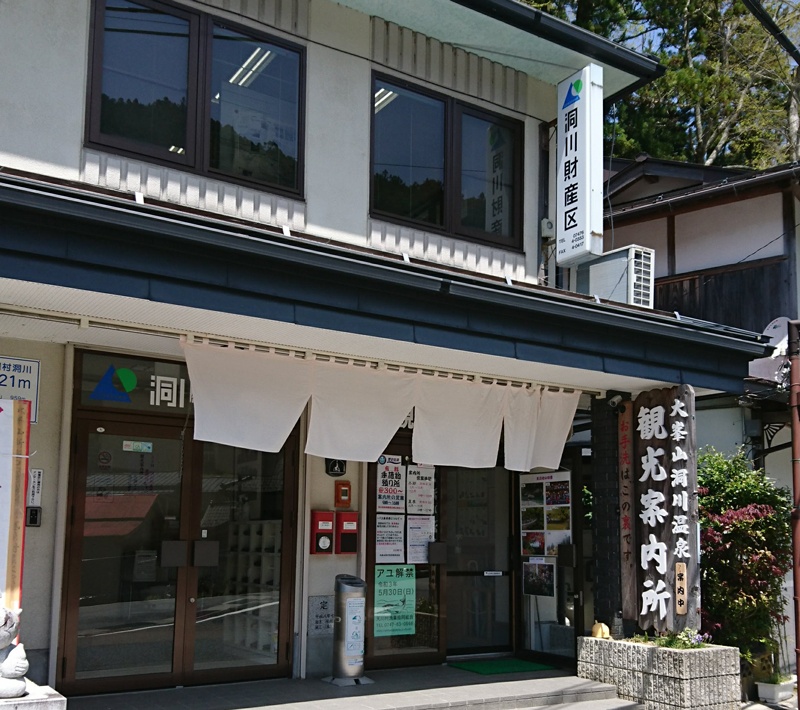
Dorogawa Hot Spring Tourist Information Center
Right in front of the Nara Kotsu “Dorogawa Onsen” bus stop. The center introduces inns and stores in the Dorogawa area and provides information for tourists. Luggage storage service is also available.
15 minutes on foot, or 10 minutes if taking the monorail from “Dorogawa Hachimangu” on the way
-
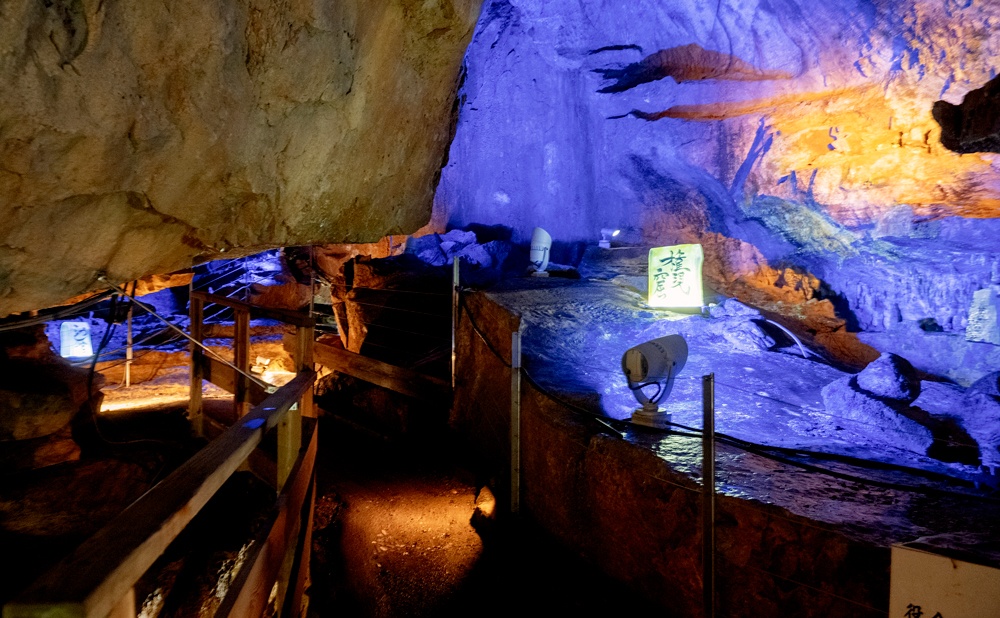
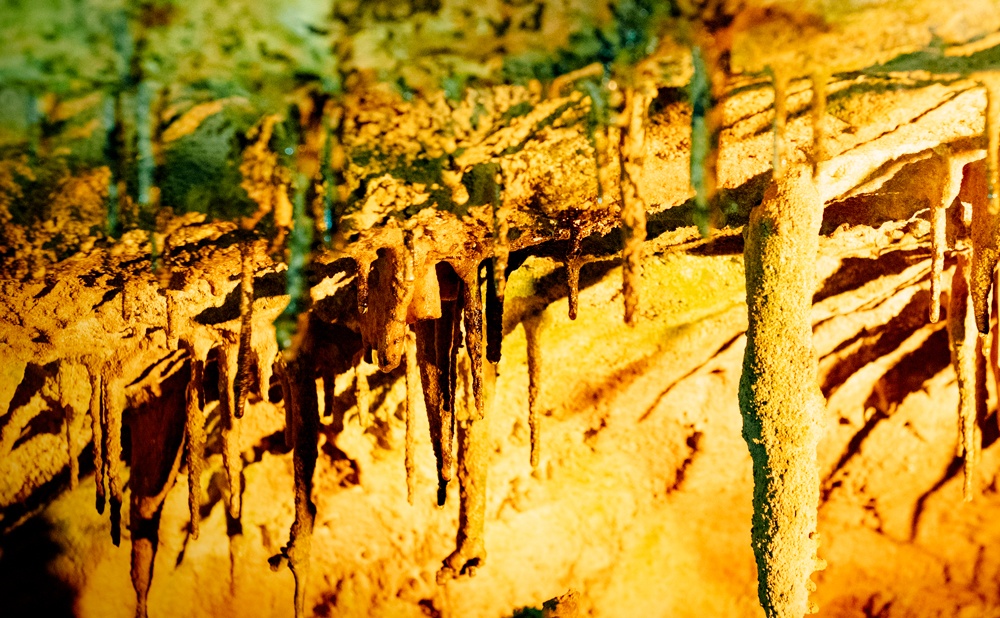
Menfudo Limestone Cave
At this 280-meter-long cave, visitors can see unique stalactites called straw stalactites, which are found only in a limited number of places in Japan. The temperature inside the cave is about 8 degrees Celsius, cool in summer and warm in winter. It is designated as a Natural Monument of Nara Prefecture.
7 minutes on foot
-

Natural Forest behind Ryusen-ji Temple
The forest protected and cherished by mountain religions is a mixture of coniferous trees such as fir and tsuga and broad-leaved trees such as beech and yellow beech. As such a forest has a high botanical value, it is designated as a Natural Monument of Nara Prefecture.
7 minutes on foot
-
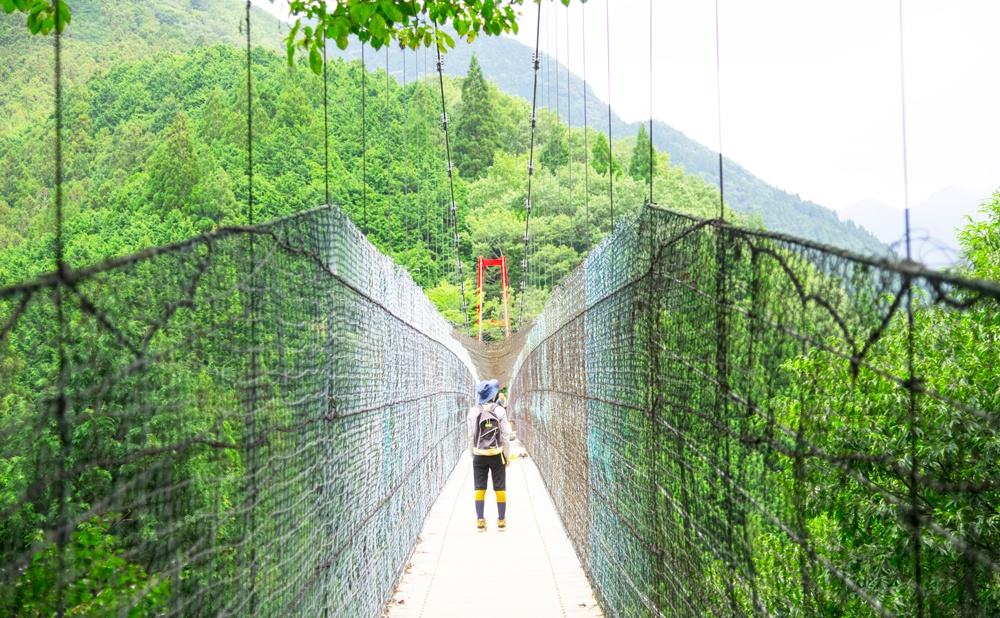
Karigane Bridge
This suspension bridge spans the natural forest behind Ryusen-ji Temple to Mount Ohara on the other side of the river. With a total length of 120 meters and a height of approximately 50 meters, it is the longest suspension bridge in Tenkawa Village.
10 minutes on foot
-
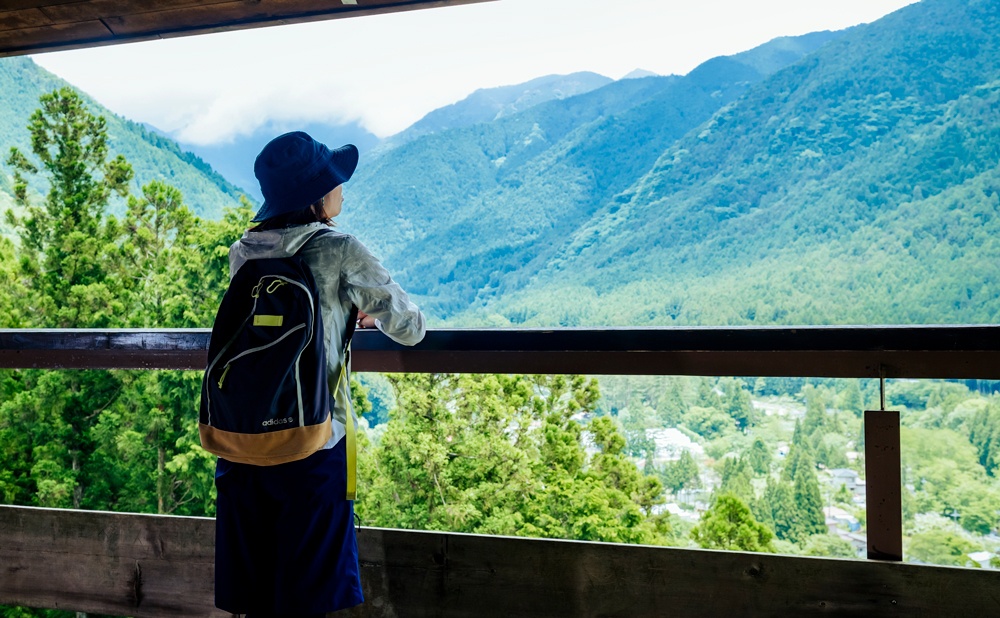
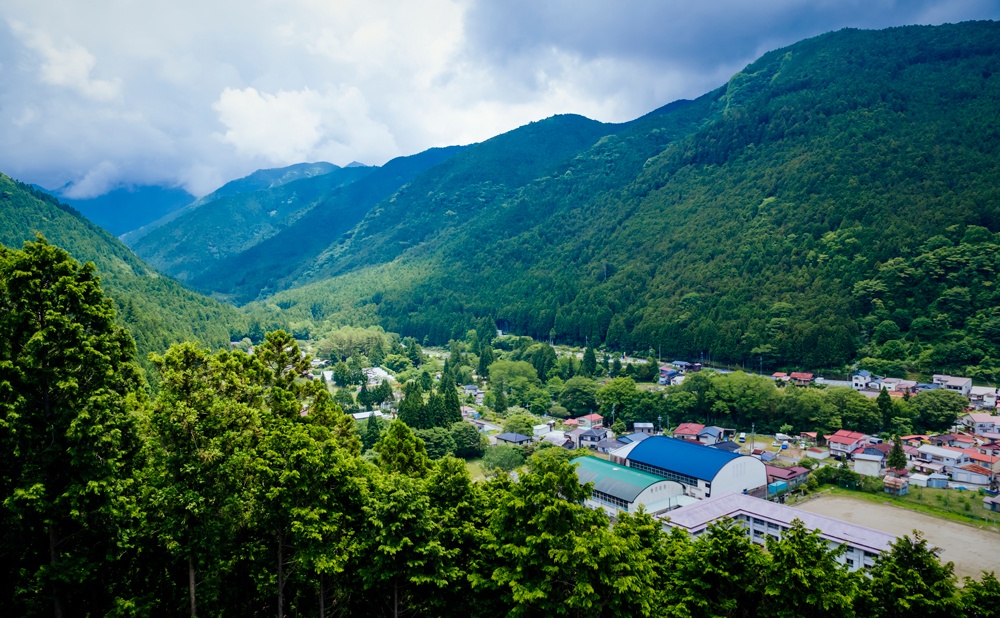
Mount Ohara Observatory
This observatory is surrounded by a grove of cedar trees. It offers a panoramic view of the village of Dorogawa and is an ideal place to enjoy lunch.
8 minutes on foot
-
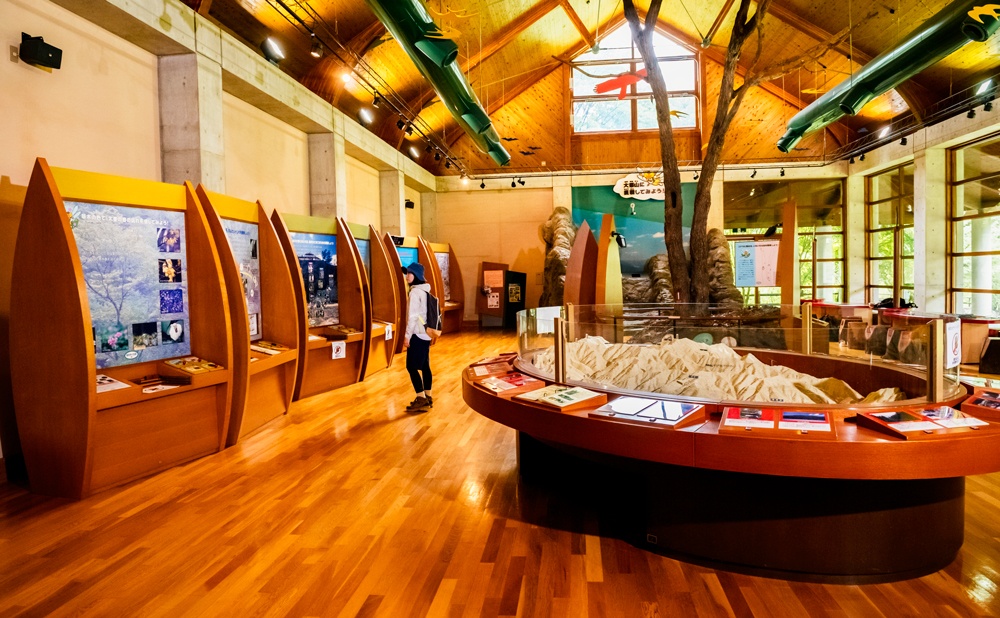
Dorogawa Eco Museum Center
This facility features nature, water, and Shugendo (the mountain asceticism). Visitors can experience the grand nature of Omine. There is a corner where you can simulate the “Nishi-no-Nozoki”, one of the Shugendo’s trainings for ascetic practices on Mount Omine (Mount Sanjo-gatake).
8 minutes on foot
-
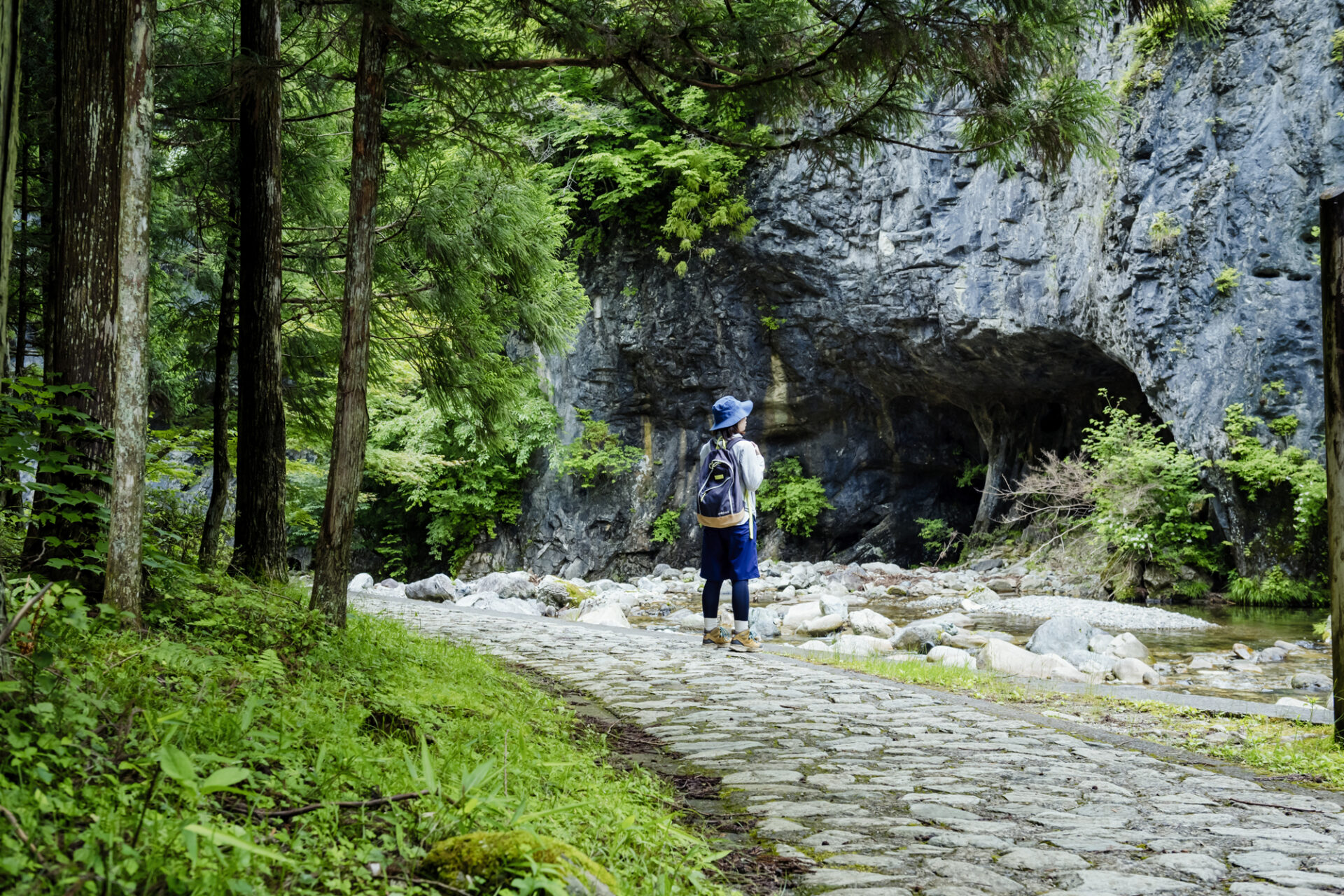
Mantis Rock Cave
This cave was opened by En-no Gyoja as the “first ascetic site” when he founded Shugendo on Mount Omine. The name “mantis” derives from the fact that the figure of people walking in the cave bending resembled a mantis.
Walking from the Mantis Rock Cave with the river view
-
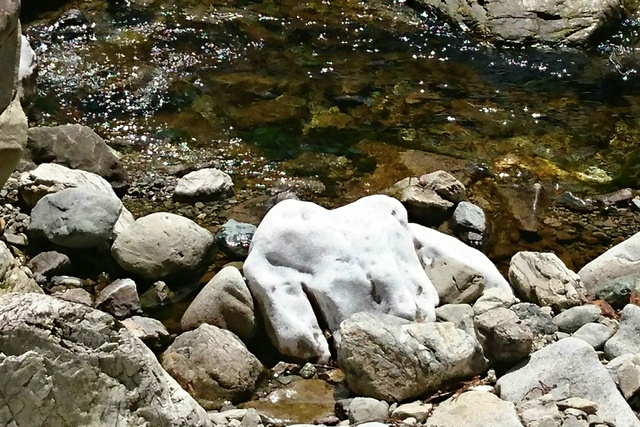
Limestone
Walking along the trail along the Sanjo River, you will see many white stones. These are limestone rocks, indicating that this area was once at the bottom of the sea. In Dorogawa, they are called “kome-kome-ishi.”
Around the limestone
-
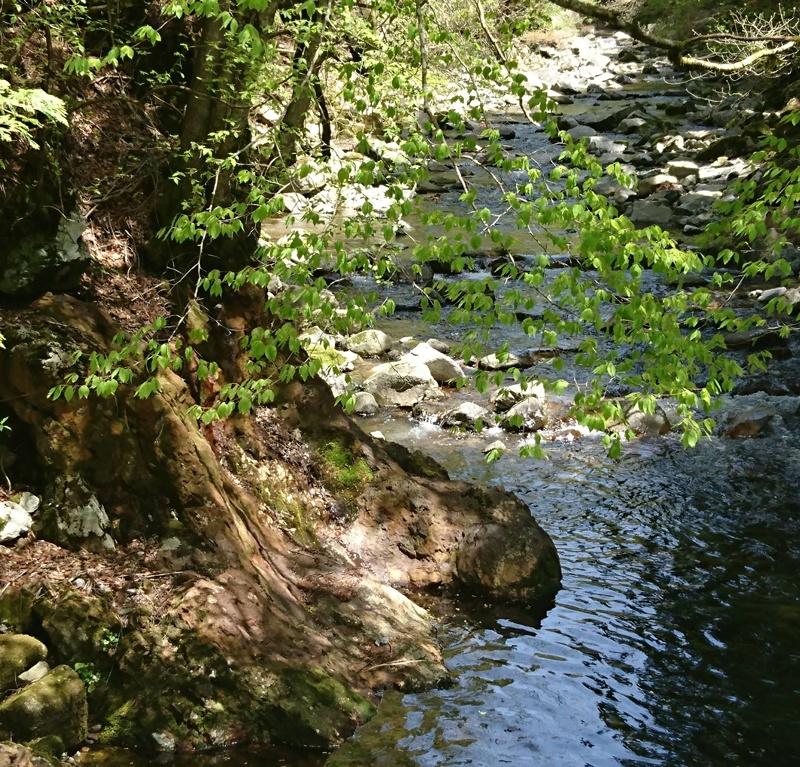
Magmatic Thermal Metamorphic Remains
As this area is the transition point from between limestone and igneous rock strata, you can see vein beds of iron ore. The red, rusty reefs protruding from the surface of the river are iron ore. This is one of the various minerals left behind by magma that rose to the boundary of the strata around 15 million years ago and reacted with nearby rocks.
20 minutes on foot
-
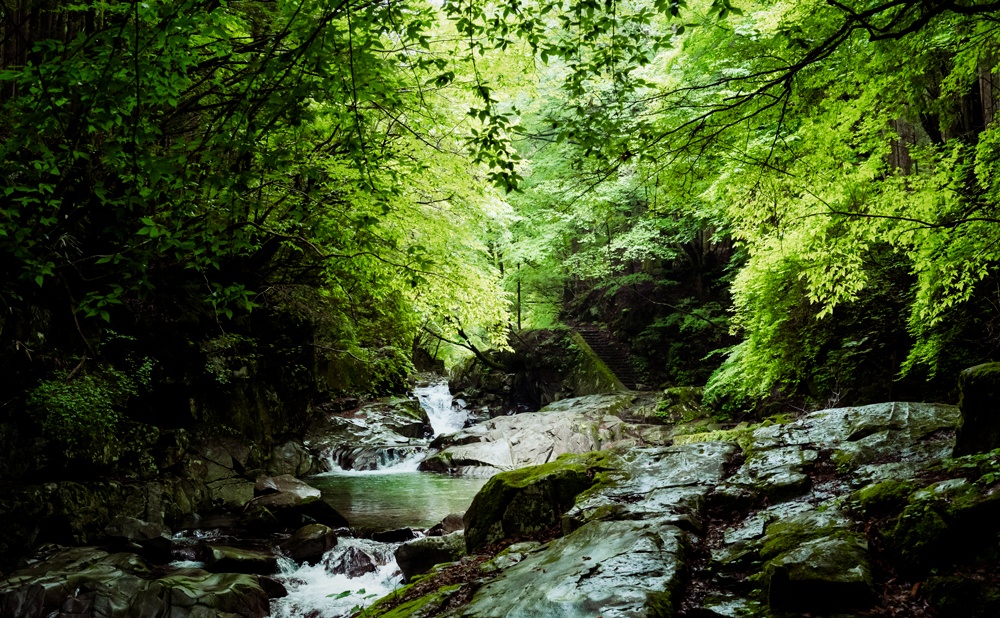
Kajika Waterfall
This is the only place on Sanjo River where waterfalls form. The name comes from the beautiful croaking frog “Kajika” that lives in the clear stream. The rocks have become round which makes the waterfall look less rough, and the water flows mellowly.
25 minutes on foot
-
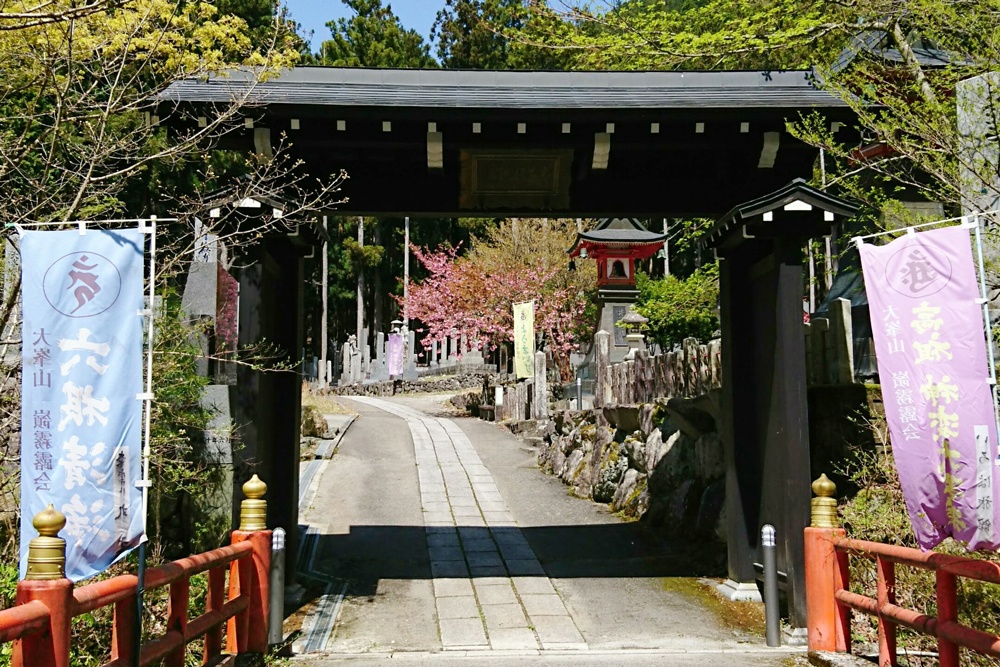
Seijo Ohashi Bridge (Omine Ohashi Bridge)
This is the starting point of the trail into Mount Omine (Mount Sanjo-gatake). There is a “women's boundary gate” which was moved from the Hahako-do Hall in 1970. A tea house (Ohashi Chaya) and public restrooms are also located here.
20 minutes on foot
-
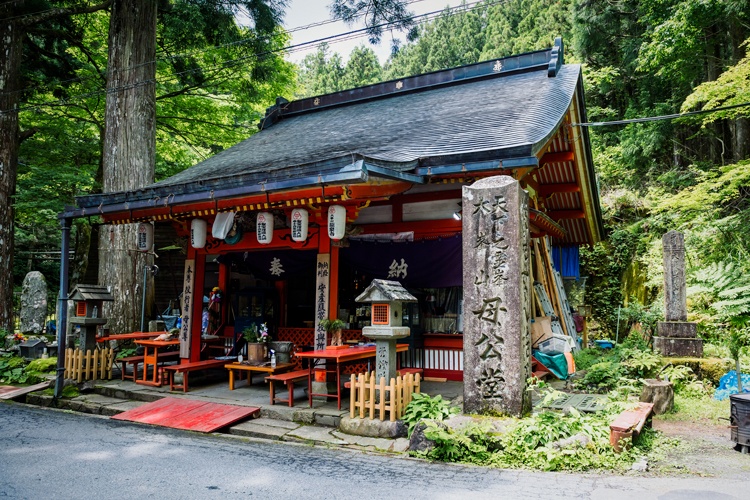
Hahako-do Hall
This hall enshrines Totsuki Shiratoume, the mother of En-no Gyoja. The hall is believed to be a place of divine protection for childbirth and safe delivery. Many people visit the hall and the smoke from the incense sticks lingers around the hall to this day.
5 minutes on foot
-
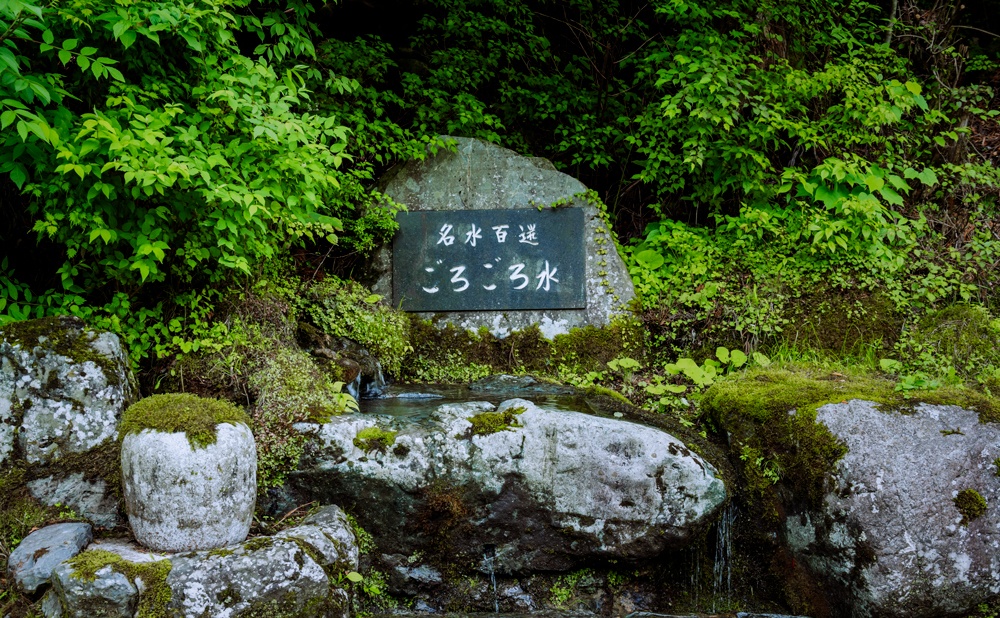
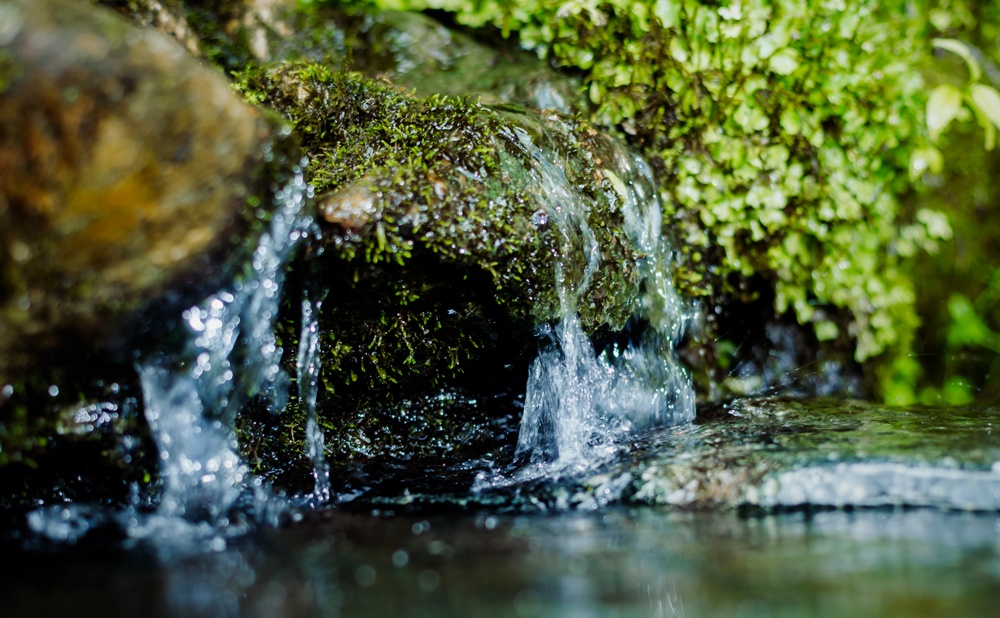
Goro-goro Water
This is one of the “100 Best Waters in Japan” selected by the Ministry of the Environment. The name “Goro-goro” is an onomatopoeia that comes from the way the fresh water flowing out from the depths of the cave makes a sound like rolling pebbles (goro-goro) and reverberates in the cave.
15 minutes on foot, or 10 minutes if taking the monorail
-
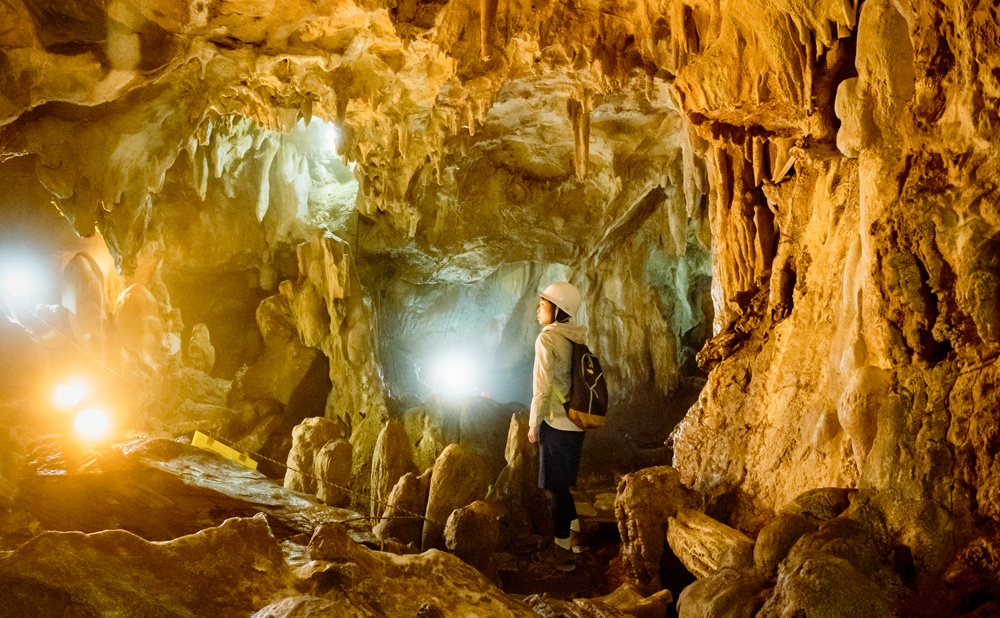
Goyomatsu Limestone Cave
Passing through a low entrance, this limestone cave is a high space inside. The cave is 80 meters deep and has many large stalactites. The largest stone pillar, the Great Golden Pillar, reaches 8 meters in length.
20 minutes on foot
-
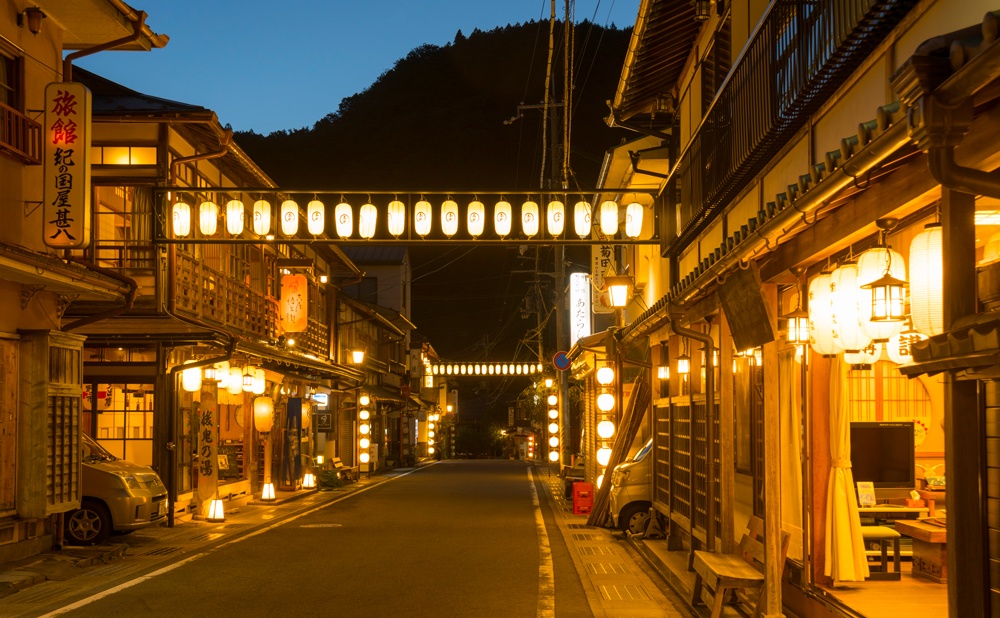
Dorogawa Hot Spring Town
Dorogawa Onsen (hot spring) area flourished as a base for the worshipper of Shugendo. Many inns, restaurants, and other facilities line the streets to form this pretty hot spring town.
- GOAL
 Tenkawa Village Sightseeing Page
Tenkawa Village Sightseeing Page